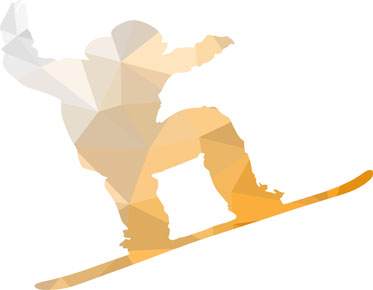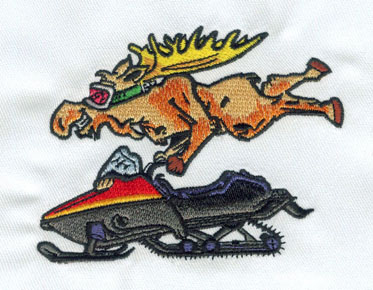The Artistry of Precision: Unveiling the World of Illustrations with Vector Art
In the ever-evolving landscape of digital art, vector illustrations stand as a testament to the marriage of precision and creativity. Vector art, characterized by its use of mathematical equations and geometric shapes, has redefined the possibilities of illustration. This blog explores the captivating realm of illustrations with vector art, unraveling the features, advantages, and transformative impact this medium has on the artistry of visual storytelling.
1. The Essence of Vector Art
Vector art is a digital graphic form that utilizes mathematical equations to create images. Unlike raster images, which rely on pixels and can lose quality when resized, vector graphics maintain their sharpness and clarity at any scale. This inherent scalability makes vector art an indispensable tool for various applications, from web design and logos to print materials and animations.
2. Core Characteristics of Vector
Art
● Scalability:
The defining
characteristic of vector art is its scalability. Whether you're working on a
small icon or a large billboard, vector illustrations
can be resized without loss of quality, ensuring precision and clarity at any
dimension.
● Precision and Clean Lines:
Vector graphics are
built using mathematical formulas, resulting in clean, well-defined lines and
shapes. This precision is especially valuable for intricate and detailed
illustrations, providing a level of accuracy that pixel-based images often
struggle to achieve.
● Editability:
Vector files are
highly editable, offering artists the flexibility to make adjustments to
individual elements without compromising the overall quality. This editability
is a powerful feature during the creative process, allowing for seamless
modifications and experimentation.
● File Size Efficiency:
Vector files are generally smaller in size compared to their raster. This efficiency is due to the representation of shapes and colors through mathematical data rather than individual pixels. Smaller file sizes contribute to faster loading times and ease of storage.
3. Versatility in Illustration
Styles
Vector art serves as a versatile canvas for artists to explore and express various illustration styles. The adaptability of vector illustrations allows artists to transition seamlessly between different themes and purposes. Whether creating minimalist designs, intricate patterns, or expressive characters, vector art provides the tools for artists to bring their creative visions to life with precision and style.
4. Applications of Vector Art in
Illustration
● Logo Design:
Vector art is a
staple in logo design due to its scalability and precision. Logos often need to
be reproduced at various sizes, making vector graphics the preferred choice to
maintain brand identity and clarity.
● Web Design:
Vector
illustrations find extensive use in web design, contributing to visually
appealing and responsive interfaces. From icons and buttons to background
graphics, vector art ensures a cohesive and polished online presence.
● Print Materials:
In the realm of
print, vector art shines in creating materials such as brochures, posters, and
business cards. The scalability ensures that the quality remains intact
regardless of the printing size.
● Animations:
Vector illustrations are a fundamental component of animated content. Their ability to maintain clarity and sharpness in different frames makes them an ideal choice for creating dynamic and engaging animations.
5. The Creative Process in Vector
Illustration
● Conceptualization:
The creative
process begins with conceptualizing the idea for the illustration. Whether it's
a character design, a scene, or a logo, artists outline the visual elements
they want to convey.
● Sketching:
While vector art
may seem synonymous with precision, the creative process often starts with
rough sketches. These sketches serve as a foundation, allowing artists to
experiment with shapes and compositions before moving to the digital realm.
● Digitization:
Once the sketch is
finalized, artists use vector graphic software like Adobe Illustrator to
translate their vision into a digital format. This involves creating paths and
shapes that define the various elements of the illustration.
● Coloring and Detailing:
Vector illustrations
allow for precise coloring and detailing. Artists can experiment with
gradients, transparency, and various blending modes to achieve the desired
visual effects. The ability to zoom in without loss of quality facilitates
intricate detailing.
● Refinement:
The editability of vector files enables artists to refine and adjust elements easily. This iterative process allows for continuous improvement until the artist achieves the desired result.
6. The Rise of Vector Art in Pop
Culture
Vector art has permeated popular culture, becoming synonymous with modern aesthetics in design and illustration. From contemporary branding to animated content on social media platforms, the crisp and vibrant nature of vector graphics has left an indelible mark on the visual landscape.
7. Advancements in Vector Art
Technology
● Tablet and Stylus
Integration:
The integration of
tablets and styluses into the vector art workflow has revolutionized the way
artists interact with their creations. The pressure sensitivity and precision of
these tools offer a hands-on and intuitive experience.
● AI-Assisted Design:
Artificial
intelligence is making its mark in the world of vector art with tools that can
assist in generating patterns, suggesting color palettes, and even refining
designs. These advancements streamline the creative process, allowing artists
to focus on the conceptual and emotional aspects of their work.
● 3D Vector Illustrations:
The evolution of vector art extends into the realm of three-dimensional design. Artists can now create vector illustrations with depth and dimension, opening up new possibilities for visual storytelling.
8. Tips for Creating Stunning
Vector Illustrations
● Master the Pen Tool:
The pen tool is the
heart of vector illustration. Mastering its use enables artists to create
smooth and precise lines, essential for detailed and intricate designs.
● Experiment with Color
Gradients:
Vector art allows
for seamless integration of color gradients. Experiment with gradients to add
depth and dimension to your illustrations.
● Understand Composition:
A strong
composition is crucial in vector illustration. Pay attention to the placement
of elements, balance, and overall flow to create visually compelling artworks.
● Use Layers Effectively:
Proper layer
organization enhances the workflow and makes it easier to edit and refine
specific elements. Utilize layers to maintain control over different parts of
your illustration.
● Stay Updated on Tools and
Techniques:
The field of digital art is ever-evolving. Stay informed about the latest tools, techniques, and trends in vector illustration to continually refine and expand your skill set.
Conclusion
Vector
art has not only revolutionized the world of digital
illustration but has become a driving force in shaping contemporary visual culture.
The marriage of precision and versatility in vector illustrations empowers
artists to create stunning and impactful visuals across various mediums. As
technology continues to advance, the future of vector art holds even more
possibilities, promising a continued evolution in the way we tell stories,
communicate ideas, and express the boundless depths of human creativity.
Whether you're a seasoned illustrator or an aspiring artist, diving into the
world of vector art opens doors to a universe where precision meets
imagination, resulting in artworks that resonate and captivate audiences
worldwide.


